Understanding Concussions and Their Impact on Children
Concussions, a form of mild traumatic brain injury, can disrupt brain function following a blow or sudden jolt to the head or body. Children and teens are particularly vulnerable due to their developing brains, with sports and everyday incidents being common causes. Recognizing concussion symptoms early and understanding how to navigate post-concussion recovery is vital for parents to support their children's safe healing and return to daily activities.
Causes and Recognizable Symptoms of Concussions in Children and Teens
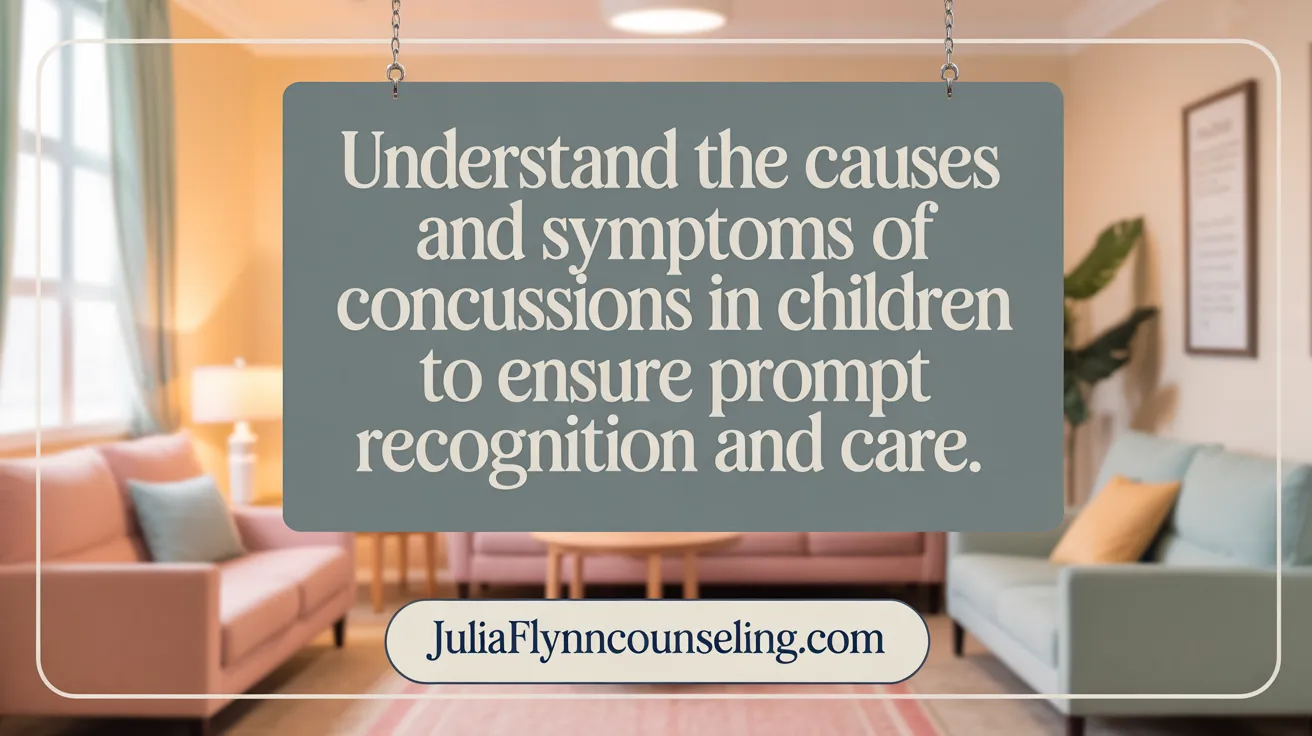
What causes concussions in children and teens, and what symptoms should be recognized?
Concussions in children and teens are commonly caused by impacts during sports, falls, or accidents that cause the brain to move inside the skull. Contact sports like football, soccer, or hockey pose higher risks, but everyday activities can also result in head injuries. For instance, slips and falls at home or playground injuries can lead to concussions.
It’s important to note that concussions aren’t always from a direct hit on the head. Rapid movements that shake the brain, such as in car accidents where the head snaps forward and back, can also cause these injuries.
Recognizable symptoms include headaches, dizziness, and nausea. Children may also experience confusion, blurred or double vision, sensitivity to light or noise, and problems with concentration or balance. Emotional changes like irritability, mood swings, or anxiety may occur alongside physical symptoms.
Signs to watch for can appear immediately or several hours to days after the injury. Immediate signs include an appearing dazed or stunned look, forgetting instructions, and clumsiness. Over time, children might develop symptoms like sleep issues, difficulty focusing, or behavioral changes.
Some symptoms are more serious and require urgent medical care. These include repeated vomiting, worsening headache, increased confusion, inability to acknowledge familiar people, weakness or numbness, slurred speech, or loss of consciousness. Recognizing these red flag symptoms early ensures that children receive prompt medical attention, reducing the risk of complications and supporting a smoother recovery.
Immediate Actions and Medical Evaluation Following a Suspected Concussion
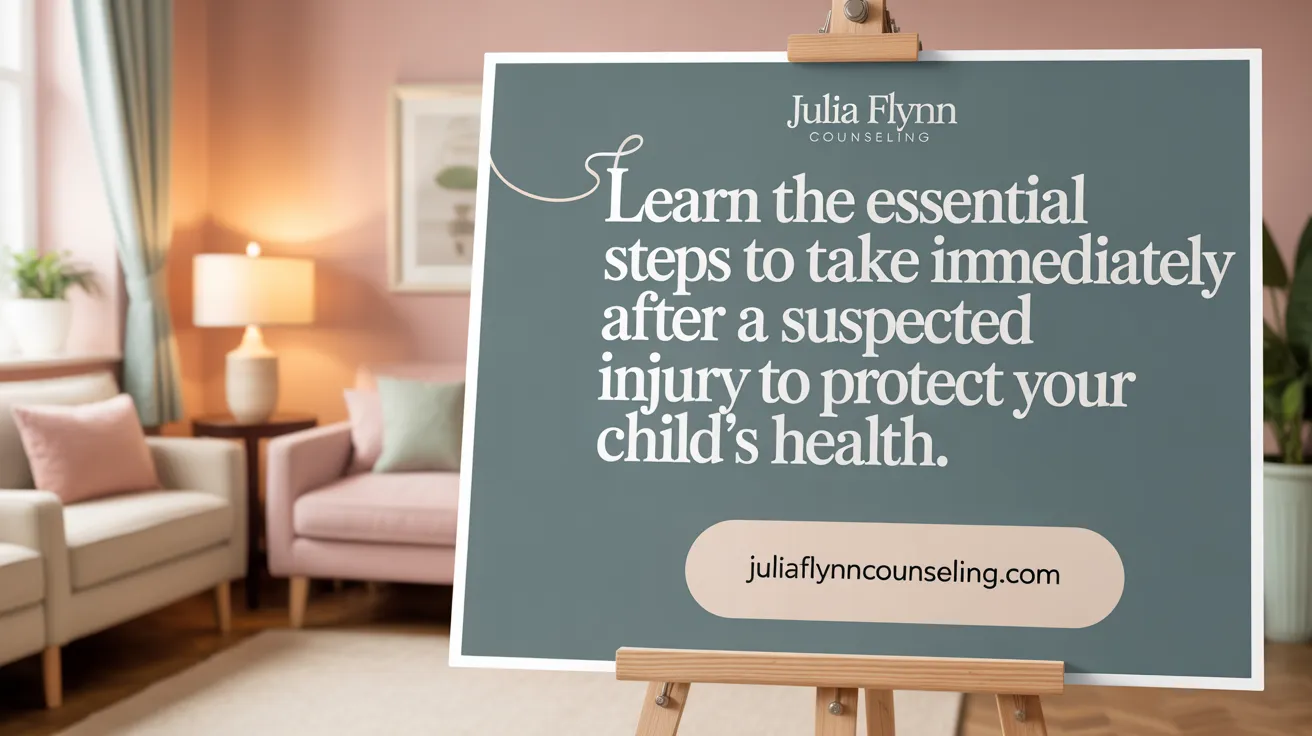
What steps should be taken immediately after a child sustains a concussion?
When a child experiences a possible concussion, the first step is to remove them from any ongoing activity, especially contact sports, to prevent further injury. The child should be monitored for severe symptoms such as worsening headache, confusion, repeated vomiting, seizures, unequal pupils, or inability to recognize people or surroundings. If these signs are present, emergency medical attention must be sought immediately.
Next, the child should undergo a thorough assessment by a healthcare professional. This helps confirm the diagnosis and guides appropriate treatment. During the initial 24 to 48 hours, the child needs physical and mental rest. This includes avoiding screen time, physical exertion, and stimulating environments. Ensuring adequate sleep and avoiding medications like aspirin or ibuprofen—unless directed by a doctor—are important early measures.
Gradual reintroduction of activities is critical for recovery. As symptoms improve, a healthcare provider will recommend a step-by-step return to cognitive and physical activities. The child should only resume sports or heavy physical exertion once they are symptom-free and cleared by a medical professional, minimizing risks of complications such as second-impact syndrome.
Diagnosing a Concussion in Children: Clinical Tools and Assessments
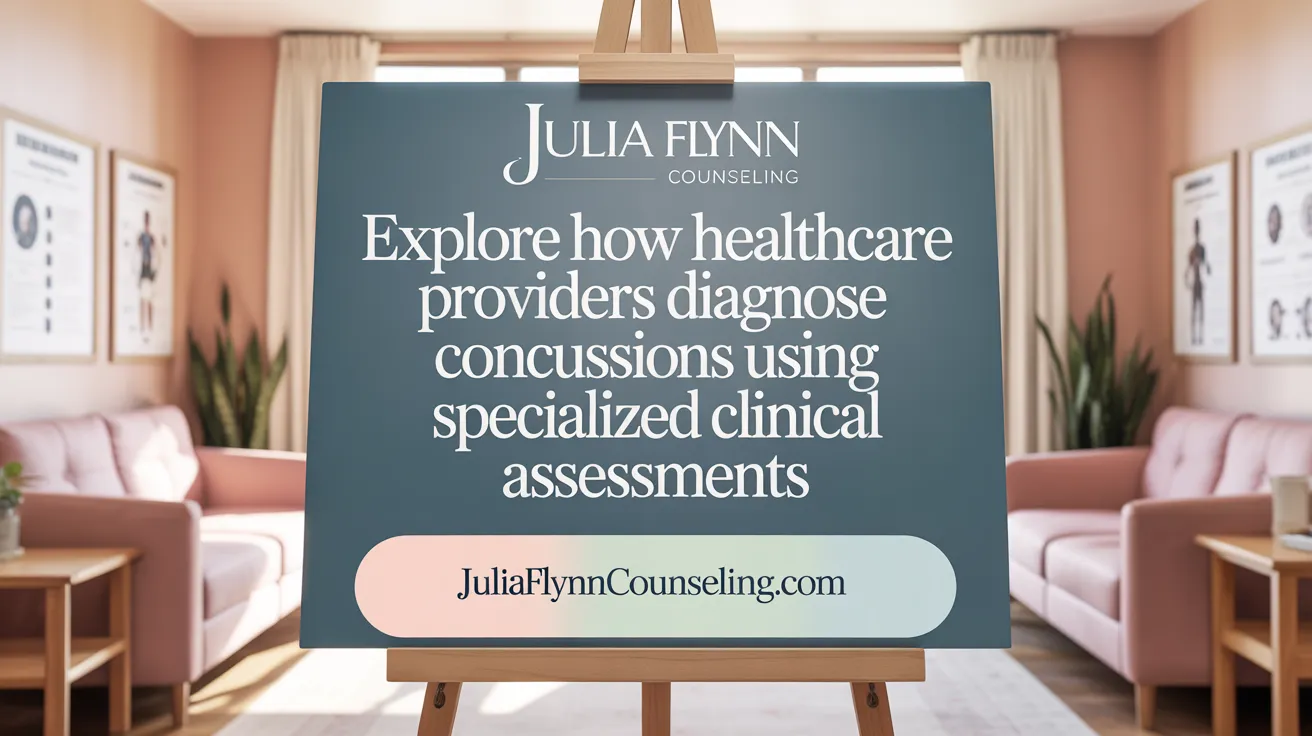
How are concussions diagnosed in children?
Diagnosing concussions in children involves a careful and thorough clinical process conducted by healthcare providers experienced in pediatric brain injuries. The initial step is a detailed history of the injury, including how it happened, when symptoms appeared, and the child's previous health and concussion history.
Following the history, the healthcare professional conducts a physical and neurological examination to assess symptoms such as dizziness, balance issues, mood changes, and cognitive functioning.
To aid in evaluation, several specialized pediatric assessment tools are used. For children aged 5 to 12, the ChildSCAT3 is commonly employed to evaluate symptom severity, cognitive abilities, balance, and coordination.
For quick, on-the-spot assessments during sports or recreational activities, tools like the Maddocks questions, SAC-C cognitive testing, and balance checks are utilized. These tests help determine if concussion symptoms are present and their impact.
In some cases, further diagnostic steps like neurocognitive testing are used, especially if symptoms persist or are severe. This testing measures various aspects of brain function and recovery.
While imaging such as CT scans or MRIs is not necessary for most concussions, they are reserved for cases where severe injury signs—like worsening headache, loss of consciousness, or neurological deficits—are suspected.
Overall, concussion diagnosis in children is based on a combination of clinical judgment, assessment tools, and, when appropriate, additional testing, ensuring prompt, accurate identification and management.
Stages and Typical Timeline of Concussion Recovery in Children
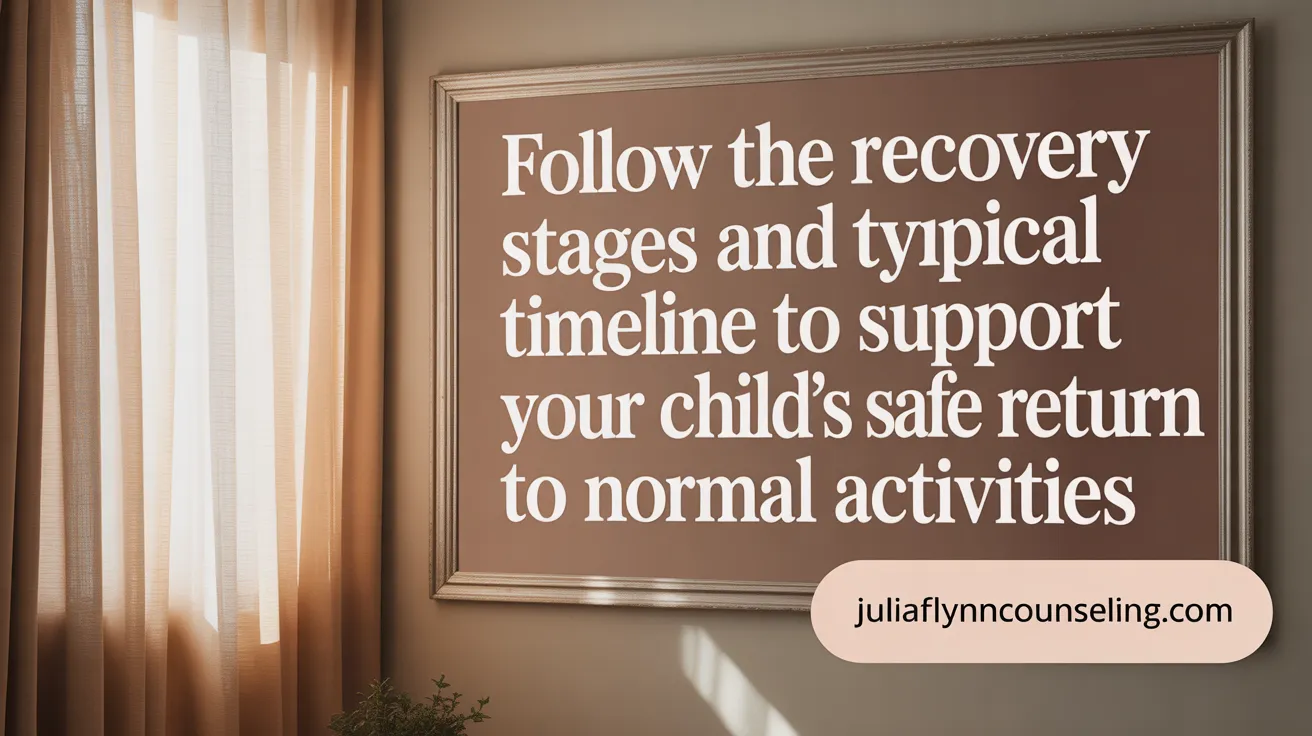
What is the typical recovery process and stages for children following a concussion?
Children recovering from a concussion generally go through several important stages that help ensure a safe return to their normal activities. The process begins with an initial period of rest, where both physical and mental activities are limited for about 24 to 48 hours. During this time, children should avoid vigorous play, schoolwork, and screen time to reduce brain stress.
After this initial rest, children can gradually resume light activities such as walking or simple, low-stimulation tasks. The key is to increase activity levels slowly and based on how well the child tolerates them, making sure symptoms do not worsen. Most children are ready to return to school within a few days, often with accommodations like shorter days or rest breaks to manage symptoms effectively.
Once symptoms have fully resolved, a structured return-to-sport protocol can begin. This involves multiple stages, starting with gentle exercises and progressively increasing in intensity. Each stage requires at least 24 hours with no symptoms before advancing, and medical clearance is needed to proceed through each step.
Monitoring symptoms closely is vital throughout this timeline. If symptoms persist beyond two to four weeks, further assessment by healthcare professionals, including concussion specialists, is recommended to evaluate for longer recovery or post-concussion syndrome.
Safe Reintegration into School, Sports, and Daily Activities Post-Concussion
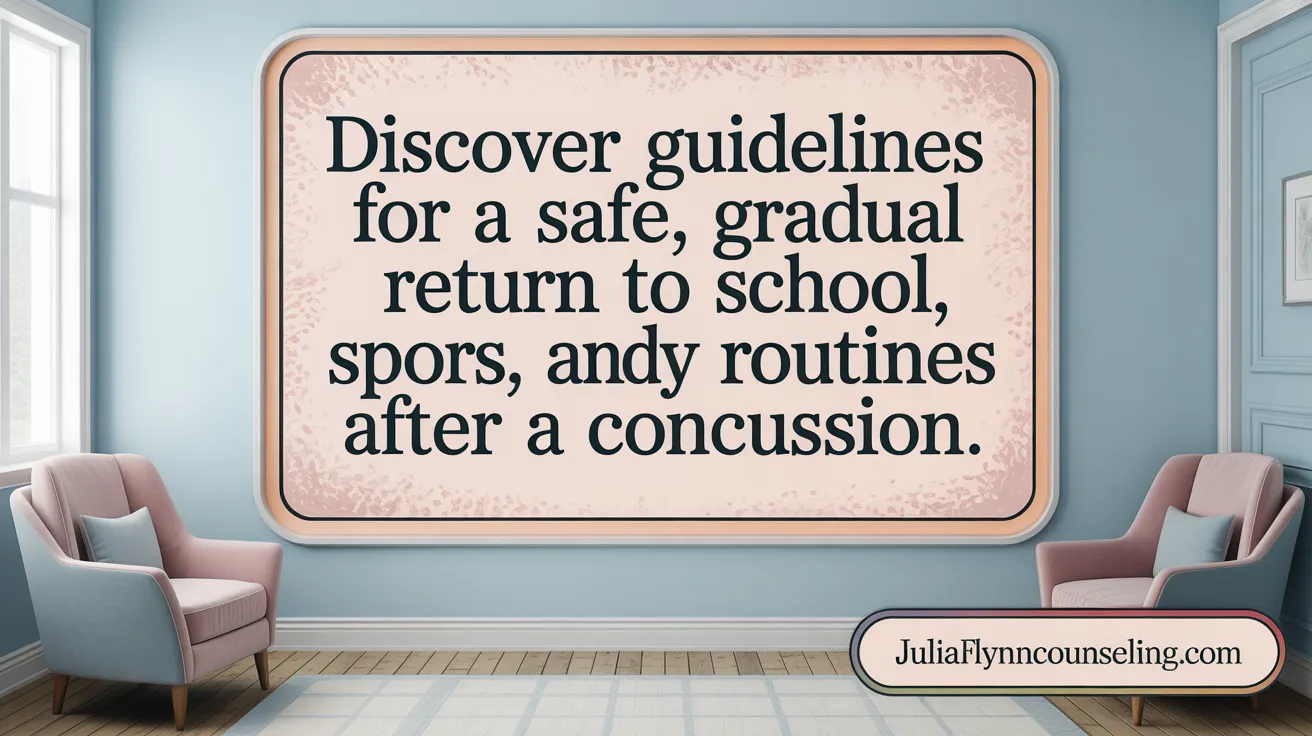
When and how can children safely return to school, sports, and other activities after a concussion?
Children can often return to school within 1 to 2 days after experiencing a concussion, even if some symptoms remain. However, full recovery usually takes longer, and a careful, step-by-step approach is safest. Initially, children should have a period of rest, which includes limiting activities like screen time, loud noises, and cognitive tasks that worsen symptoms.
Gradually, they can begin to re-engage in light activities, monitoring how they feel during each step. The process involves slowly increasing physical and mental activities, such as short school days or light sports, only progressing when symptoms do not worsen. It is essential that children are symptom-free before returning to full activities.
A structured 'Return to Play' (RTP) protocol must be followed before children resume contact sports. This typically involves a series of stages, from light aerobic exercise to full-contact training, with each stage lasting at least 24 hours and only continuing if no symptoms recur.
Communication among parents, healthcare providers, schools, and sports coaches is critical. Healthcare professionals should evaluate and clear children before they return to vigorous activities. Schools should provide academic accommodations, such as shorter days, rest breaks, or modified tasks, to support gradual cognitive recovery.
Throughout recovery, close monitoring for symptoms related to thinking, physical activity, sleep, and emotional health is vital to prevent setbacks. When managed properly, children can safely reintegrate into school, sports, and daily routines, promoting recovery and well-being.
Safety Measures and Precautions During Concussion Recovery
What safety measures and precautions should be taken during concussion recovery?
Children recovering from a concussion require careful monitoring and a safe environment to promote healing and prevent further injury. Initially, parents and caregivers should vigilantly watch for signs of worsening symptoms, such as a severe headache, repeated vomiting, seizures, or when the child becomes unresponsive, as these are red flags needing immediate medical attention. Any concerning signs should prompt a visit to a healthcare professional.
During the recovery phase, adequate rest is crucial, but prolonged bed rest or staying in dark, quiet rooms is no longer the standard practice. Instead, children should have a balance of physical and mental rest, with gradual reintroduction of light activities like walking, as tolerated. This helps prevent deconditioning and supports emotional well-being.
Creating a safe environment also involves removing physical hazards that could lead to falls or injuries. This includes securing furniture, ensuring safe play areas, and avoiding activities with a risk of head impacts until fully cleared by a medical professional. Emotional support from family and friends is equally important during this time, helping children cope with their recovery.
Children should follow all medical advice carefully, including phased return-to-school and sports activities, which depend on their individual progress and symptom resolution. Only after receiving clearance from healthcare providers should children resume full physical activities and contact sports.
Ongoing observation for persistent symptoms such as mood changes, fatigue, or concentration difficulties is vital. If symptoms do not improve or worsen, prompt consultation with healthcare professionals is advised to adjust the recovery plan accordingly, ensuring a safe and efficient return to normal activities.
Emotional Support and Coping Strategies for Parents and Caregivers
Why is emotional reassurance and open communication important during concussion recovery?
Providing children with emotional reassurance helps them feel safe and understood during the often uncertain recovery process. Parents and caregivers should maintain open lines of communication, encouraging children to express their feelings and concerns without fear of judgment. This approach can reduce anxiety and foster a sense of control, which is crucial as children adjust to their symptoms and recovery expectations.
How can social interaction and expressing feelings help children cope?
Encouraging social interaction, within the limits of their energy and symptoms, can prevent feelings of isolation and depression. Children benefit from maintaining friendships and participating in supportive activities, which can improve mood and emotional resilience. Teaching children to verbalize their feelings promotes emotional expression and helps parents understand their child's mental state, guiding appropriate support.
What strategies can parents use to manage mood and behavioral changes?
Children recovering from concussions may experience mood swings, irritability, or behavioral shifts due to brain injury impacts. Parents should observe these changes carefully, offering patience and understanding. Establishing a consistent routine, setting clear expectations, and offering positive reinforcement can help manage difficult behaviors. If mood disturbances persist or worsen, consulting a mental health professional can provide additional coping tools.
When is professional mental health support necessary?
If symptoms of anxiety, depression, or post-traumatic stress appear or intensify, seeking help from a mental health professional, such as a psychologist or counselor, can be beneficial. Therapeutic interventions, including Cognitive Behavioral Therapy (CBT), can assist children in processing their emotions, reducing stress, and developing healthy coping mechanisms. Early intervention can prevent the development of more severe mental health issues.
How to create a supportive environment for recovery?
A positive environment that minimizes stress and pressure helps children recover emotionally. This includes routine-based activities, relaxing spaces, and involving children in enjoyable activities that don’t worsen symptoms. Parents should also encourage relaxation techniques like deep breathing, mindfulness, or gentle physical activity, reinforcing that recovery is a gradual process. Supporting independence through age-appropriate responsibilities fosters confidence and resilience.
What are effective strategies to support independence and resilience?
Promoting small achievements, allowing children to make choices related to their recovery, and teaching problem-solving skills can empower children. Celebrating progress, no matter how minor, boosts motivation. Patience and reassurance during setbacks reinforce resilience. Parents should advocate for the child’s needs at school and social settings, ensuring accommodations support their ongoing independence while managing symptoms.
This comprehensive support approach, rooted in emotional reassurance, social connection, professional guidance, and resilience-building, is essential for helping children navigate their concussion recovery effectively.
Supporting Your Child Through a Safe and Effective Recovery
Concussion recovery in children requires a careful blend of timely recognition, appropriate rest, and gradual reengagement with daily life and activities. Parents play a critical role in monitoring symptoms, facilitating communication among healthcare providers and schools, and providing emotional support throughout the journey. By understanding concussion causes, symptoms, diagnostic procedures, and recovery protocols, parents can help ensure their children heal safely and effectively. With proper precautions and a collaborative approach involving medical professionals, educators, and families, children can successfully overcome concussions and return to thriving in their daily environments.
References
- Concussions in Children & Teens: What Parents Need to Know
- Returning to Learn After Concussion: A Guide for School Professionals
- Returning to School and Sports After a Concussion
- What Parents Should Know About Concussion Symptoms, Recovery ...
- 5 things parents should know about concussions
- [PDF] Concussion Q&A: What Parents Need to Know - CDC
- What Parents Should Know About Concussions - Child Mind Institute
